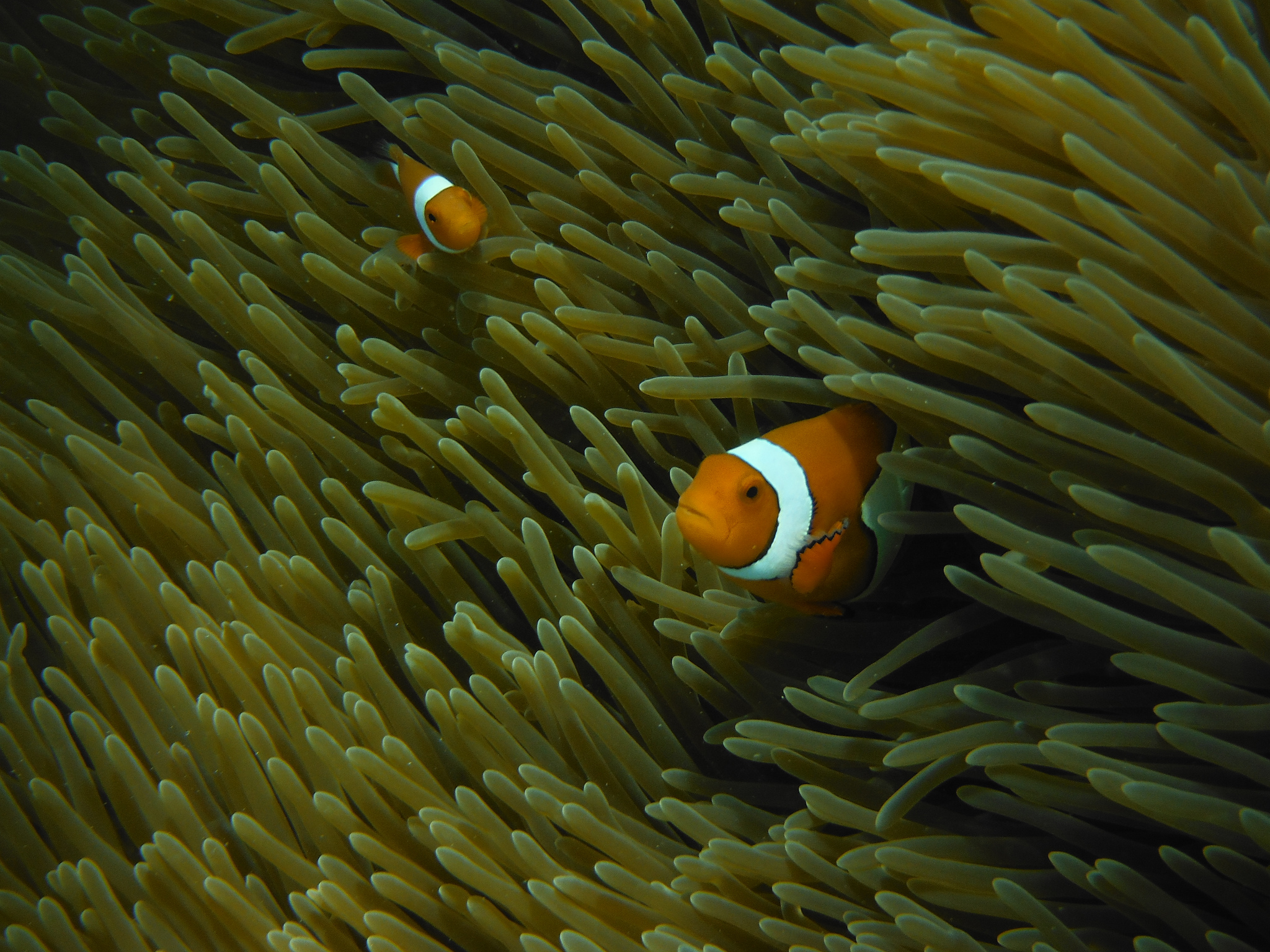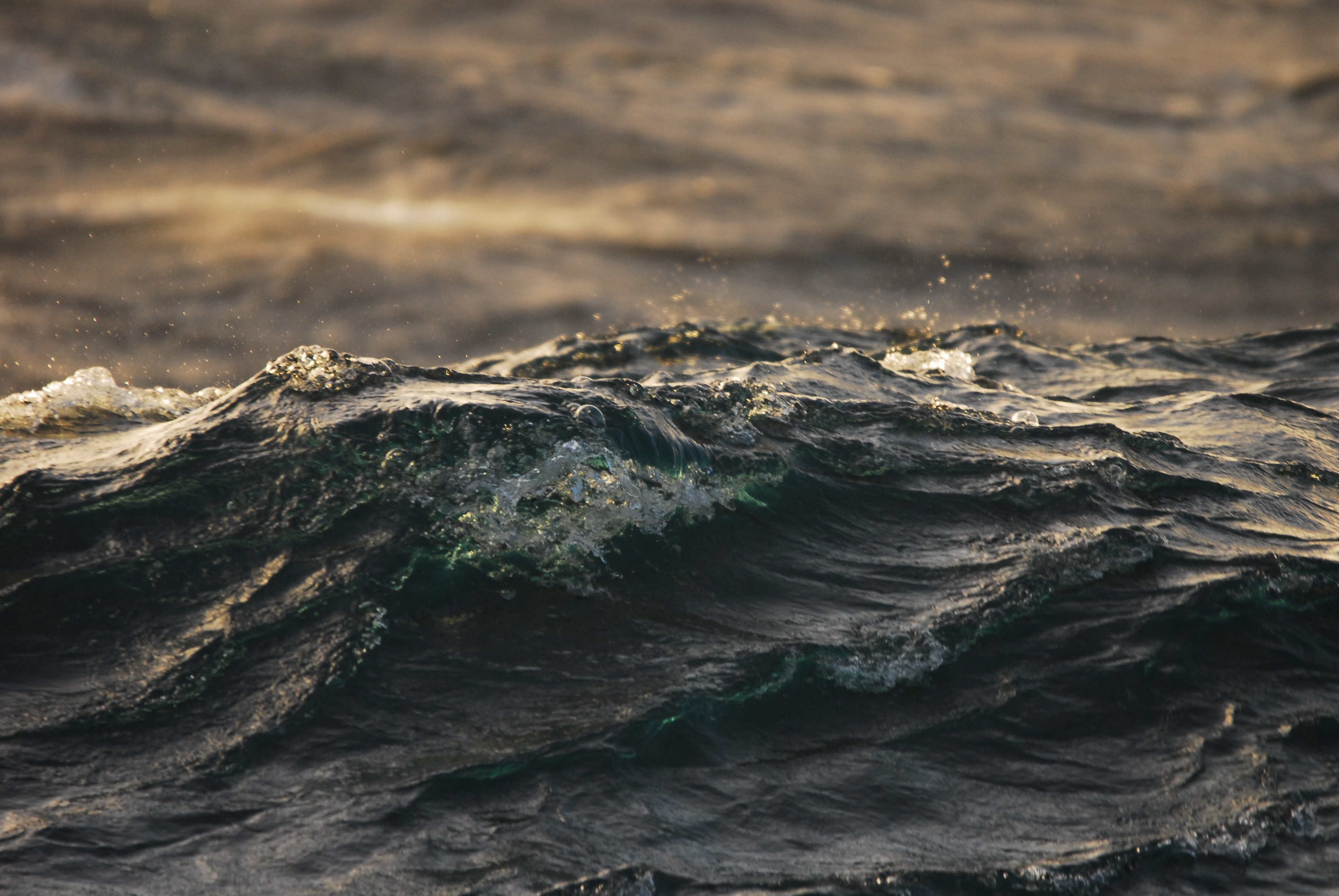By Eamonn Bermingham
Where would we be without the ocean? Swimming, surfing, snorkelling would be tough, not to mention all the yummy food we’d miss. But it has also played a more important role in all of our lives; fulfilling the noblest of causes.
For many years the ocean has been on the front line in the fight to slow down climate change, absorbing around a quarter of the carbon dioxide we produce. The problem is that the scars of this attack are beginning to show.
Ocean acidification is often referred to as the “other CO₂ problem”, and is a chemical response to the dissolving of carbon dioxide into seawater.
The equation is simple: as CO₂ in the atmosphere goes up (and there was a record-breaking increase in 2013), the pH of the ocean falls, with negative impacts on marine biodiversity, ecosystems and society.
A picture of fish.
Many species of fish – and the ecosystems that support them – could be threatened by ocean acidification. Image: flickr.com/psykedelic61/
But how bad is it?
For the past two years we’ve been working as part of an international team brought together by the United Nations to investigate the impacts of ocean acidification, and our findings have been released today.
The rate of acidification since pre-industrial times and its projected continuation are unparalleled in the last 300 million years, and are likely to have a severe impact on marine species and ecosystems, with flow-on effects to various industries, communities and food security.
We’ve estimated that the loss of tropical coral reef alone – such as the Great Barrier Reef – could end up costing a trillion US dollars a year.
A groundswell of scientific studies on the effects of ocean acidification are developing our understanding of the issue.
What does the future hold?
Ten years ago, only a handful of researchers were investigating the biological impacts of ocean acidification. Around a thousand published studies later, our understanding of ocean acidification and its consequences has increased tremendously.
Experimental studies show the variability of organisms’ responses to simulated future conditions: some are impacted negatively, some positively, and others are apparently unaffected.
If we are to truly understand the future impacts of ocean acidification, more research is needed to reduce the uncertainties, reduce emissions, and reduce the problem.
Read the full report: “An updated synthesis of the impacts of ocean acidification on marine biodiversity”
The report was compiled by the UN’s Convention on Biological Diversity, an international team of 30 scientists.




8th October 2014 at 4:55 pm
Every thing changes all the time & nature has dealt with it ever since the Earth coalesced into a solid. The Earth will go on dealing with it. It’s us humans that have to adapt.
10th October 2014 at 12:25 pm
Maybe, but if the pH of the ocean drops too far, the phytoplankton won’t be able to make a calcium carbonate shell. No shell, no plankton. No plankton, no oxygen generation (and they make about 50% of the atmospheric oxygen). No plankton, no plankton-eaters. No plankton-eaters, no fish. And the spiral probably won’t take that long
11th October 2014 at 11:03 am
Note my reply above:
Even in the most extreme example of seawater saturated in CO2 – we’d all suffocate before that happened globally – the pH does not fall below 7.7.
Be aware, not alarmed!
6th November 2014 at 6:01 pm
Very true,when you look at the history of the world every species that’s dominated was able to take advantage of another species decline ,mainly due to environmental changes.humans are on top atm,but if we continue to destroy our world bacteria will probably take over until the next dom species has its turn
7th November 2014 at 4:59 pm
What is meant by being the dominant species (or order, in the case of the dinosaurs)? Maybe this is hair-splitting, but I wouldn’t say that bacteria could ever be said to “take over”. They are near the base of the so-called “tree of life”. Consider the other top species or order: humans, dinosaurs, and the list kind of runs out. Being “dominant” or “on top” or whatever expression one chooses, must be more than being numerically superior, or having a wider range. Surely it has to do with matters like where you are in the food chain, what effect you have on the environment (can you change water tables, change the flora of an area, etc).
Simple question, not so simple answer, because everything hangs on the terms of reference of “dominance”…
8th October 2014 at 2:43 pm
“The equation is simple: as CO₂ in the atmosphere goes up (and there was a record-breaking increase in 2013), the pH of the ocean falls…”
The statement is correct as far as it goes, but it needs to be quantitative. The question needed to be answered is: “How much can an increase in CO2 from, say 350ppm to 400ppm, change the ocean’s buffered pH, especially since the CO2/H2O system has a pKa=6.35?”
It is interesting that one of the biggest changes in pH, of about 0.1 pH units, occurs in the equatorial mid-Pacific (ca 1000km west of the Galapagos). Why should the pH decrease there, in a warm sea where the solubility of CO2 is less, as opposed to occurring in colder seas?
These discussions need to be quantitative!
9th October 2014 at 9:23 am
There’s a link to the report.
10th October 2014 at 11:34 am
I hadn’t previously read that link given that it’s titled “impacts”.
However, it does contain some dubious scientific discussion in its Section 1 “Background”, eg p14’s diagram of modelled concentrations. This shows hydrogen ion concentration rising by over 200% (ie 2 pH units) with a 300% increase in atmospheric CO2. (This diagram doesn’t look like any Bjerrum plot I’ve seen previously. I’m guessing that, among other errors, they’ve used the pKa of H2CO3 rather than CO2/H2O, ie 1000x more acid, but the original reference no longer seems available.)
Now check real data shown at p91 gathered at a PNG volcanic seep continually exuding CO2 (Fabricius). The seawater is obviously saturated with CO2 yet the lowest measured pH was ca 7.7, down from the surrounding 8.1 – a drop of only 0.4 pH. As this water is saturated – using the incorrect assumption that the measured acidification is due to CO2 – the pH cannot fall below 7.7 regardless of how high the atmospheric CO2 might reach.
Additionally, as most “experts” have done, Fabricius has ASSUMED that the ocean acidity change is due to increasing CO2. (But without doing the requisite calculations, that I’ve suggested previously, that would show this is not possible).